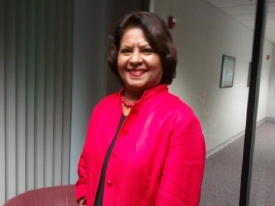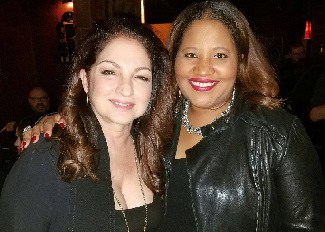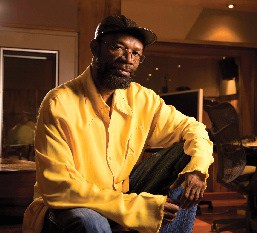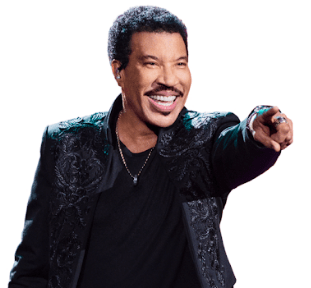Trinidad and Tobago: The Road We’ve Traveled from August 31, 1962 to Present
By Shama Harrysingh
WEST PALM BEACH – On May 28, 1962 the historic Independence Conference between the British Government and the delegations representing the Colony of Trinidad and Tobago took place at Malborough House in London.
On June 8, 1962 the Right Honorable the Secretary of State for the Colonies announced from London that it had been decided at the Conference that the Colony was to be granted Independence on August 31, 1962.
This new status of nationhood meant that Trinidad and Tobago would need to have its distinctive national emblems, a National Flag and Coat of Arms by which it would be identified universally.
A committee which had been appointed by Government to advise on the design of the Flag and the Coat of Arms of the new Nation, to choose a Motto for it, and to consider suggestions from the public on these matters, submitted its report on June 26. Cabinet immediately approved the report, and a picture of the National Flag was published. Its colors: Red, White and Black.
Red is the color most expressive of our country. It represents the vitality of the land and its people; it is the warmth and energy of the sun, the courage and friendliness of the people.
White is the sea by which these lands are bound: the cradle of our heritage; the purity of our aspirations and the equality of all men and women under the sun.
The Black represents for us the dedication of the people joined together by one strong bond. It is the color of strength, of unity, of purpose and of the wealth of the land. The colors chosen represent the elements Earth, Water and Fire which encompass all our past, present and future and inspire us as one united, vital, free and dedicated people.
The coat of arms was also designed by the Independence committee, and features the Scarlet Ibis (native to Trinidad), the Cocrico (native to Tobago) and the Hummingbird. The shield bears three ships, representing both the Trinity, and the three ships that Columbus sailed.
On August 31st, 1962 at 12 midnight, the Union Jack, the national flag of Great Britain and her colonies was lowered to declare Trinidad and Tobago an Independent Nation. With Her Royal Highness Princess Alice, representative of the Queen, Elizabeth II in attendance, along with our Prime Minister, his cabinet, members of the opposition and an impressive list of dignitaries, the National Flag of Trinidad and Tobago was proudly hoisted and a new page was turned – Trinidad and Tobago was freed from colonialism and became an Independent nation.
In his Independence Day message, Prime Minister, the late Eric Eustace Williams also known as the Father of the Nation stated, “Our National Flag belongs to all our citizens. Our national Coat of Arms, with our National Birds inscribed therein, is the sacred trust of all our citizens. So it is today. Please, I urge you, let it always be so. Let us always be able to say, with the Psalmist, behold, how good and how pleasant it is for brethren to dwell together in unity.”
The motto chosen “Together we aspire, together we achieve” reflects that unity so fervently desired of a people thrown together via African, slavery and Indian Indentureship, via the plantation, British colonialism, and French and Spanish governance.
On August 30th, the day before Independence, Dr. Williams spoke to the children of the nation establishing the priority he had given to education as a vehicle for transformation from the mentality of being colonized to the reality that we would be the ones charting our own course and mapping our own destiny. To the children he said, “You the children, yours is the great responsibility to educate your parents….you carry the future of Trinidad and Tobago in your school bags.”
What then have we to say for our fifty years of Independence, of self-government, of self-determination and self-management? As with any young nation, teething problems were many but the resilience, dedication and perseverance of our small twin-island state saw us become a Republic on September 24, 1976 with a President Sir Ellis Clarke as head of state and the election of our first female Prime Minister, Mrs. Kamla Persad Bissessar who succeeded Mr. Patrick Manning in 2010.
Two great poets, Cecil Gray and Nobel Laureate Derek Walcott summarize our achievements brilliantly.
”I rejoice with superlatives,” writes the poet Cecil Gray, ”that a small island finds Gullivers born on its shore.” And indeed, in this renaissance nation of Trinidad and Tobago the superlatives flow as casual as commas punctuating the list: the fastest, the strongest, the brightest and the most beautiful. He describes the nation as “the equal of any group in the world.”
The Nobel Laureate Derek Walcott, points to ”the depth and contradictions that enrich a place like Trinidad. It is so varied and concentrated in its variety that it is probably one of the most exciting places in the world to work in.”
Trinidad and Tobago is a nation with a unique inter-mix of cultures and cross-culturization reflected in the national holidays and festivals – Carnival, Indian Arrival Day, Spiritual Baptist Day, Emancipation Day, Independence Day, Divali, Eid al-Fitr, Hosay, Christmas and Easter among others.
Our cuisine, language, architecture, religions, music, song, dance, drama and creative arts are expressions of the diversity of ethnicities. If it is a product of Trinidad and Tobago, it is truly the richest blend of the Syrian-Lebanese, the Chinese, the Spanish, the French, the East Indian, the African, the English, German and more. A large percentage of our people are of mixed race identified by the terms, Doughla, Chinese-creole and Spanish-creole to name a few.
The musical genres calypso, soca, parang, chutney, chutney-soca, soca-parang, and the fusion of musical instruments producing pantar which is the music of the steelpan and the Indian musical instrument, the sitar, tassa drums and African drums all reflect that cross-fertilization of cultures that is identifiably Trinbagonian. Icons who have contributed to the development of music include but are by no means limited to Jit Samaroo, Elliott Mannette, Liam Teague, Balliram Bala, The Mighty Sparrow, Slinger Francisco, Lord Kitchener Aldwyn Roberts, Bertie Marshall, Tony Williams, Sundar Popo, Len “Boogsie” Sharpe, Calypso Rose, David Rudder, Rikki Jai, Daisy Voisin, Machel Montano and recently deceased Dr. Pat Bishop Linton.
In sports and athletics men and women have flown our flag high. From Wendell Mottley, Jean Pierre, Hasley Crawford, Michael Agostini, Arnold Dwarika, Ato Boldon, George Bovell III to Darren Ganga, Dwight York, Everard “Gally” Cummings, Brian Lara, our Soca Warriors, very recent,
at the London Olympics, Bronze Medallist, Lalonde Gordon and Gold Medallist, nineteen year old Keshorn Walcott who brought glory to his home town of Toco and the people of T & T. Walcott is the first non-European to win the men’s javelin since 1952. The story of excellence continues to be written in the annals of the history of our young nation.
Land of the Humming Bird, Land of the Manta Ray, a snorkeler’s delight, Land of the steelpan which is the only new musical instrument created in the twentieth century, Land of the world’s most spectacular street festival, Carnival, Land of the Nylon Pool and the Pitch Lake, two of the world’s wonders, Land of the scarlet ibis and the cocrico, and the Home of the world renowned butterfly collection has produced two Nobel Laureates, Derek Walcott and Vidiadhar Surajprasad-V. S. Naipaul, internationally famous writers Rosa Guy, Samuel Selvon , Michael Anthony, Kenneth Ramchand and Wayne Brown, poets Cecil Gray and Eintou Pearl Springer, innumerable scholars, Tony and Grammy Award winner, singer, song writer and record producer Heather Headley and jazz great Hazel Scott.
It is widely accepted that Trinidad and Tobago has the most beautiful women in the world. Project Runway Winner Ninth Season in 2011 Anya Ayoung-Chee, beauties, Miss Universe 1977 Janelle Penny Commissiong and Miss Universe 1998 Wendy Fitz Williams, Miss World 1996, Giselle Laronde and greats of the creative art of Mas-making, George Bailey, Edmund and Lil Hart, Stephen lee Heung, Peter Minshall and Wayne Berkeley among many, many others are all products of the land of creativity, pageantry, ethnically diverse cuisine, religious and racial harmony.
The publication of the National Institute of Higher Education, Research, Science and Technology (NIHERST), Trinidad and Tobago Icons in Science and Technology (Vol I) and Vol 2 are a testimony of Trinidad and Tobago’s excellence in Science and Technology. The volumes provide profiles of individuals who have attained a high level of distinction in their chosen field. Many of them are internationally recognized for their achievements as educators, healers, researchers, innovators, institution builders and policy makers. Among these are Dr. Bert Achong, Dr. Courtenay Bartholomew, Dr. Barbara Hull, Dr. Rudranath Capildeo, Bertie Marshal, Elliot Mannette, Ranjit Kumar, Dr. Rodney Maingot, Dr. Stephen Bennett, Fr. Arthur Lai Fook, Dr. Halsey Mc Shine, Professor St. Clair King, and Dr. Allastair Karmody.
The modernization of Port of Spain, the implementation of the education policy that makes education virtually free from “ ABC to PhD,” the institution of the University of Trinidad and Tobago, the compulsory upgrading of every teacher in the nation to the qualification of a bachelor’s degree and above, the development of the arts and the erection of a National Performing Arts building in Port of Spain and San Fernando, the modernization of public commuting to include state of the art coaches, water taxis and the Tobago Ferry Service attest to the level of greatness to which Trinidad and Tobago has reached over the last fifty years.
We continue to be the largest producer of petroleum in the Caribbean and with the expansion of the Liquid Nitrogen Gas (LNG ) plant in the last six years, Trinidad and Tobago remains the largest supplier of natural gas in the Western Hemisphere. Two of the largest methanol plants in the world are in Point Lisas. The increase in the production of manufactured goods, food and beverages are embarked upon and rapid expansion in these areas is the point of focus. Numerous construction projects are in process with priority given to major highways and bridges.
Our prayerful people continue to call on God to guide our nation to continued prosperity as we look forward to the future with optimism and hope. It is the desire of every citizen to make living in Trinidad and Tobago peaceful and progressive, politically stable and economically viable where our younger generation will be assured of a future of promise, where each one looks out for his or her neighbor and where every creed and race indeed finds an equal place.
Today, the beautiful twin Islands of Trinidad and Tobago with a population of approximately 1.5 million stand tall and proud on the world’s stage.
May God continue to bless our nation. Happy Independence to all.

Shama Harrysingh





